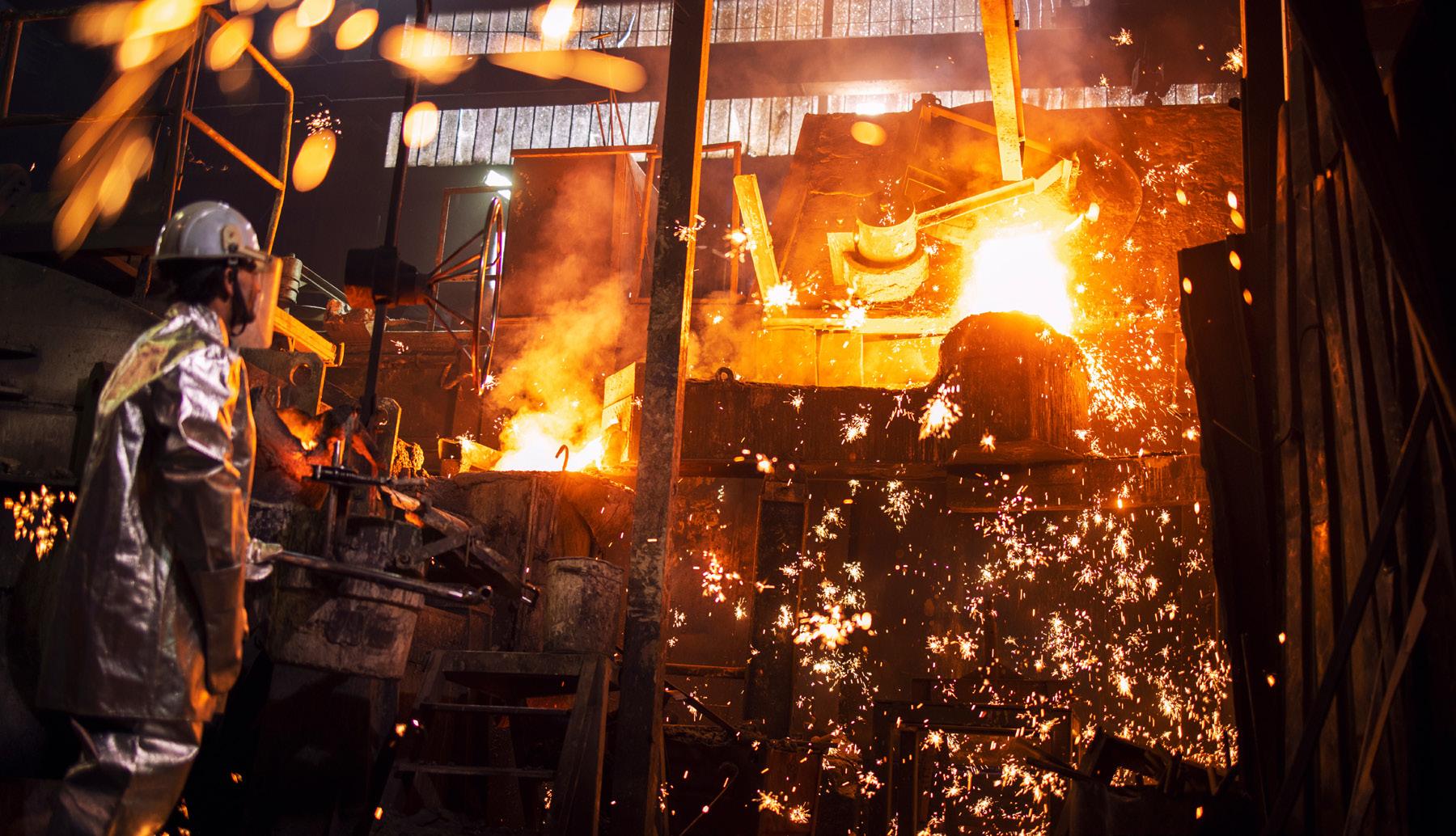






As one of the world’s largest iron ore producers, Rio Tinto is a name renowned within the mining industry. With more than 150 years of experience backing it, the company has been hard at work implementing expansion plans and enacting its sustainability strategy.
For Rio Tinto, the world’s second largest metals and mining corporation, 2025 is already shaping up to be an actionpacked year. From green investments to asset expansion, Rio Tinto is covering all its bases as it navigates a rapidly evolving landscape.
Sustainability remains a top priority for Rio Tinto in 2025, building on its ambitious multi-billion-dollar commitment, announced five years ago, to cut carbon emissions in half by 2030. With growing emphasis on decarbonisation, the mining giant


has ramped up its investments in renewable energy, carbon storage and technological advancement, implementing key new projects across the globe.
In February, Rio Tinto signed a new power purchase agreement with Red Rocket South Africa that would greatly benefit its Richards Bay Minerals operation. First operating in 1976, Richards Bay Minerals is a world leader in heavy mineral sands extraction and refining, as well as South Africa’s biggest mineral sands producer. Currently owning a 74% share in the producer, Rio Tinto has a prominent interest in its success.
Under the new agreement, Red Rocket
electricity to its Richards Bay Minerals operation. This contract will be fulfilled using wind energy from the Overberg Wind Farm, which is expected to begin producing energy from December 2026.
This new agreement joins two other clean energy agreements previously assigned to Richards Bay Minerals. The Bolobedu solar agreement was implemented back in 2024 and is expected to generate up to 300GWh of clean energy to cover 17% of the minerals producer’s energy requirements. Khangela Emoyeni wind farm also joined the energy cluster in June of the same year, with plans to generate 140MW of wind energy for



Once all three renewable energy sites are up and running, it is estimated that, collectively, they will help reduce the mineral producer’s carbon emissions by a whopping 60%.
On a similar vein, the company has also been busy unlocking new sustainable pathways for its iron ores.
In 2023, Rio Tinto’s scope 3 emissions were reportedly 18 times higher than its scope 1 and 2 emissions, prompting it to set out three separate pathways for progression (existing, emerging and future) that were designed to help reduce the carbon emissions of its consumers.
Under the first route, Rio Tinto is dedicated to working with customers to lower the carbon intensity of Blast Furnace steel production. Once complete, the company will seek to utilise its high-grade iron ores to encourage the excelled use of low-carbon
DRI-EAF technologies. From there, Rio Tinto hopes this accelerated growth will inspire the development of new technologies.
In an effort to bolster this strategy, Rio Tinto entered a new agreement with GravitHy, a sustainable iron and steel company decarbonising steel production with low CO2 DRI. The agreement will see Rio Tinto become a prominent sales agent for the steel producer, in an effort to highlight the need for its green HBI. In return, GravitHy will work to process Rio Tinto’s iron ore at the steel producer’s upcoming hydrogen-powered plant. By utilising this sustainable pathway, Rio Tinto expects to save almost 90% of emissions produced via standard processing.
Although partnerships are a prominent feature of Rio Tinto’s growth strategy, the company has also been implementing


ONCE ALL THREE RENEWABLE ENERGY SITES ARE UP AND RUNNING, IT IS ESTIMATED THAT, COLLECTIVELY, THEY WILL HELP REDUCE THE MINERAL PRODUCER’S CARBON EMISSIONS BY A WHOPPING 60%.
several key investments to further enhance capabilities. One particular example which is beginning this year, involves Rincon, its first commercial-scale lithium operation.
Based in Argentina, Rincon, which had previously been operating at a humble 3,000-tonnes per year of battery-grade lithium carbonate, will undergo a major $2.5 billion expansion. With work expected to begin shortly, the multi-billion-dollar plans
will see the plant’s capacity increase by a further 57,000 tonnes.
Speaking on the topic, Rio Tinto’s Chief Executive Jakob Stausholm, explained why this investment is so important: “The attractive long-term outlook for lithium driven by the energy transition, underpins our investment in Rincon. Rincon is a large, long-life asset with ore reserves 60 per cent higher than we assumed at the time of acquisition,



and this investment ensures that lithium will become one of the key pillars of our commodity portfolio for decades to come.”
Construction is expected to continue through to 2028, when first production is estimated to take place. From there, the plant will undergo a three-year ramp up to full capacity.
With so much advancement underway, Rio Tinto is determined to be around for the long haul and has implemented several key programmes to encourage the development of skills in young people. From leadership development programmes to formal and informal mentorships, the company is committed to nurturing a positive environment for the next generation of leaders – successfully signing up more than 250 people to its graduate prog-rammes each year. This dedication has landed the multinational company within Canada’s Top

100 Employers for Young People in 2025 – a big deal for Rio Tinto which currently holds the lead position as the largest mining and metals company operating in Canada.
In line with this news, the company recently appointed Georgie Bezette as its new Chief People Officer, who is dedicated to further talent development, nurturing of positive workplace cultures and creating more inclusive environments for all. Ms Bezette joins the role from her previous position as the company’s Chief Operating Officer and holds almost 20 years of experience working at the company.
The development of its people will continue to play a prominent role in Rio Tinto’s strategies going forward. As the company looks to enhance its offering and expand its presence, providing a high-quality, experienced service is key to ensuring long-term success, fostering strong client relationships and maintaining a competitive edge in the industry. n


